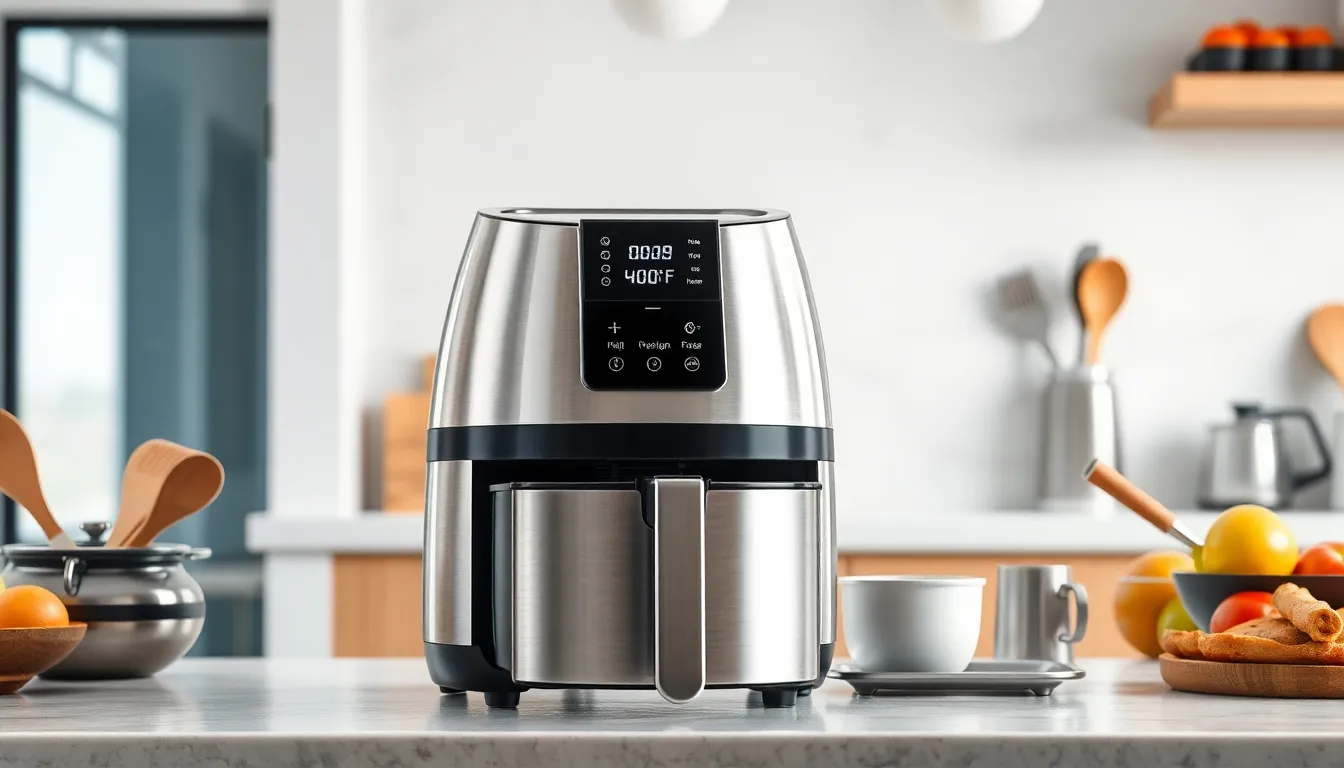Imagine waking up to the irresistible aroma of crispy bacon without the splatter or mess of a frying pan. Enter the air fryer, your new best friend in the kitchen. It’s like having a personal chef who knows exactly how you like your bacon—perfectly cooked and ready in a fraction of the time.
Table of Contents
ToggleBenefits Of Using An Air Fryer For Bacon
Using an air fryer offers several advantages for cooking bacon. First, it reduces cooking time significantly. Air fryers circulate hot air, achieving crispness in less than half the time needed for traditional frying methods.
Minimal cleanup follows air frying. No oil splatters or greasy messes occur, making it easy to enjoy bacon without extensive post-cooking cleaning. Less mess means more convenience during breakfast prep.
Health benefits also arise from using an air fryer. Air frying requires little to no added oil, resulting in lower fat content compared to frying in a skillet. Choosing this method fosters a healthier breakfast that aligns with dietary preferences.
Crispy bacon is a hallmark of air frying. The consistent hot air circulation ensures even cooking, yielding perfectly crispy strips every time. Variability in cooking times is minimal when using this appliance.
Portion control becomes easier with an air fryer. Many models accommodate multiple strips simultaneously, allowing cooks to prepare enough bacon for family meals or gatherings without hassle.
Versatility extends beyond just bacon. Air fryers can cook various breakfast items, elevating the breakfast experience further. From eggs to potatoes, air fryers provide a complete breakfast solution in one appliance.
Time efficiency enhances overall meal preparation. With quick cooking cycles, bacon can be ready simultaneously with other hot breakfast items. This synchronization simplifies the morning routine for busy households.
Preparing The Air Fryer

Prepping the air fryer ensures optimal cooking results for bacon. Cleanliness and temperature play crucial roles in achieving perfectly crispy strips.
Cleaning The Air Fryer
Proper cleaning sets the stage for effective bacon cooking. It’s important to detach the basket and tray from the air fryer. Use warm, soapy water to clean these components. Consider using a non-abrasive sponge to avoid damaging the nonstick coating. For stubborn grease, a gentle scrub may be necessary. Wipe the interior of the air fryer with a damp cloth to remove any residue from previous uses. Ensuring that all parts are thoroughly dried prevents unwanted moisture from affecting the cooking process.
Preheating The Air Fryer
Preheating the air fryer boosts cooking efficiency and crispiness. Set the temperature to 400°F to target optimal bacon texture. Allow the fryer to reach this temperature for about 3-5 minutes. Achieving the correct preheat minimizes cooking time and enhances bacon quality. Consistent temperatures lead to even cooking results, ensuring that all strips get the perfect crisp. Remember, adequate preheating contributes to the overall success of air-fried bacon.
Steps To Make Bacon In An Air Fryer
Making bacon in an air fryer is simple and efficient. Follow these steps for perfectly crispy bacon.
Choosing The Right Bacon
Thick-cut bacon delivers a satisfying texture. Look for options with a good balance of fat and meat for optimal flavor. Consider center-cut bacon if reducing fat content is a priority. Uncured bacon offers a different taste, free from preservatives. Organic varieties often provide a healthier choice with no added hormones. Read labels to ensure quality ingredients, ensuring the bacon meets personal preferences.
Arranging The Bacon
Arrange bacon strips in a single layer within the air fryer basket. Ensure no overlapping occurs to allow hot air circulation. Use a heat-resistant rack if available, as it can elevate the bacon and promote even cooking. Avoid cramming the basket; overcrowding may lead to uneven crispiness. Keep extra strips to a minimum for consistent results. Begin with a smaller batch for optimal cooking, especially with thicker bacon cuts.
Cooking Tips For Perfect Air Fryer Bacon
Achieving perfect bacon in an air fryer requires attention to timing and temperature, along with careful checks for doneness.
Timing And Temperature
Cook bacon at 400°F for optimal results. Timing varies based on thickness; typically, thin-cut bacon requires about 8-10 minutes, while thick-cut bacon may take 12-15 minutes. Monitor the bacon closely as it cooks to achieve the desired crispiness. Consider flipping the bacon halfway through cooking for even browning. Utilize a timer for accuracy, ensuring consistent results each time.
Checking For Doneness
Evaluating doneness involves more than just visual cues. Crispy bacon usually has a defined crunch and golden-brown edges. Use tongs to test a strip; it should bend easily but not break. If desired, cook for an additional 1-2 minutes for extra crispiness. Always remove bacon promptly when it reaches the preferred texture, as residual heat continues to cook it slightly after removal from the air fryer. This practice helps maintain the perfect texture and flavor.
Making bacon in an air fryer transforms breakfast into a hassle-free experience. With its ability to produce perfectly crispy strips while minimizing mess and cleanup it’s a game changer for busy mornings. The air fryer not only cooks bacon quickly but also offers a healthier option with less fat.
By following the steps outlined and keeping an eye on cooking times and temperatures anyone can achieve bacon that’s both delicious and satisfying. Embracing this method not only elevates bacon preparation but also opens the door to exploring other breakfast possibilities. Enjoying perfectly cooked bacon has never been easier or more enjoyable.













